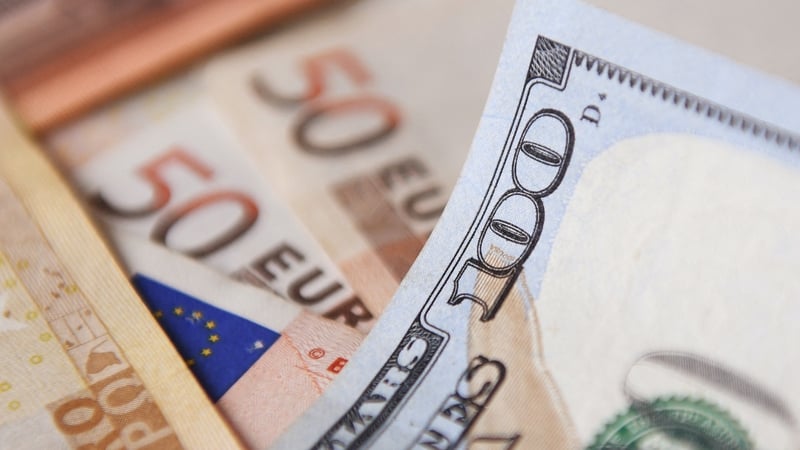The euro extended its rally today and hovered at near four-month highs as Germany’s proposed €500 billion infrastructure fund boosted Europe’s growth prospects despite global trade tensions worrying investors.
The single currency is up nearly 3% this week, on track for its best week since November 2022, taking another leg higher after an announcement last night from the parties hoping to form Germany’s next government of the new fund and an overhaul of borrowing rules.
It rose 0.57% against the dollar today to $1.0687 and firmed against other currencies, too, including the British pound, the Japanese yen and the Swiss franc.
“The big shift that we’ve seen in German fiscal policy is providing a significant kind of tailwind for the euro to strengthen further in the short term,” said Lee Hardman, senior currency analyst MUFG.
“Certainly the market is pricing in now – a more positive outlook for Europe’s economy going forward with the fiscal stimulus likely to provide more support for growth in the coming years,” he added.
Hardman, however, cautioned about the downside risks from US President Donald Trump’s tariff threats, saying early April will be a key “crunch point” for Europe’s economy.
Also in the mix, the ECB is expected to cut interest rates tomorrow, with more to follow as it tries to prop up weak economic growth.
If fiscal stimulus by Europe’s biggest economy supports growth, it would reduce pressure on the ECB to cut rates more aggressively and is a “positive shock” for the euro, Hardman added.
Other European currencies also rallied against the dollar, with sterling at a near four-month high of $1.2852, up 0.4% on the day. The Swiss franc was at 0.8867 per dollar, its strongest since mid-December.
It was not just European developments that were boosting the euro, pound and franc against the dollar, however, as signs of slowing economic growth in the US, partly as a result of uncertainty about tariffs, hurt the US currency.
The dollar index, which measures the US currency against six peers, hit its lowest since November 11 at 105.08. The dollar was also down 0.4% on the safe-haven Japanese yen at 149.19, just above Tuesday’s five month low.
US President Donald Trump yesterday again vowed reciprocal tariffs from April in his first speech to Congress since taking office.
Trump’s 25% tariffs against imports from Mexico and Canada took effect yesterday, along with a doubling of duties on Chinese goods to 20%, and Canada and China quickly acted in kind, while Mexican President Claudia Sheinbaum vowed retaliation but without providing details.
But currency traders are still struggling to assess whether the tariffs will be permanent or if they are negotiable.
The Canadian dollar steadied to C$1.4385 to the dollar, well off the C$1.479 to which it weakened a month ago when tariffs were first mooted.
Mexico’s peso edged 0.2% lower at 20.5381 per dollar.
Meanwhile, in Asia, China pledged more fiscal stimulus today, signalling greater efforts to boost consumption to protect economic growth amid heightened trade tensions with the US.
Policymakers set this year’s GDP growth goal at roughly 5%, as expected. In response, the offshore yuan edged up 0.07% to 7.2586 per dollar.
“Premier Li’s pledge at the opening of the NPC (parliament), to provide additional stimulus to catalyse domestic consumption, should be well received by markets,” said Brian Arcese, a portfolio manager at Foord Asset Management.
The China-sensitive Aussie traded 0.17% higher at $0.62834, also boosted by upbeat domestic data that showed Australia’s economy expanded at the fastest pace in two years in the December quarter.
The New Zealand dollar similarly rose 0.21% after falling to $0.5654 on news of Adrian Orr’s sudden resignation as head of the Reserve Bank of New Zealand, three years before his current term was due to end.




